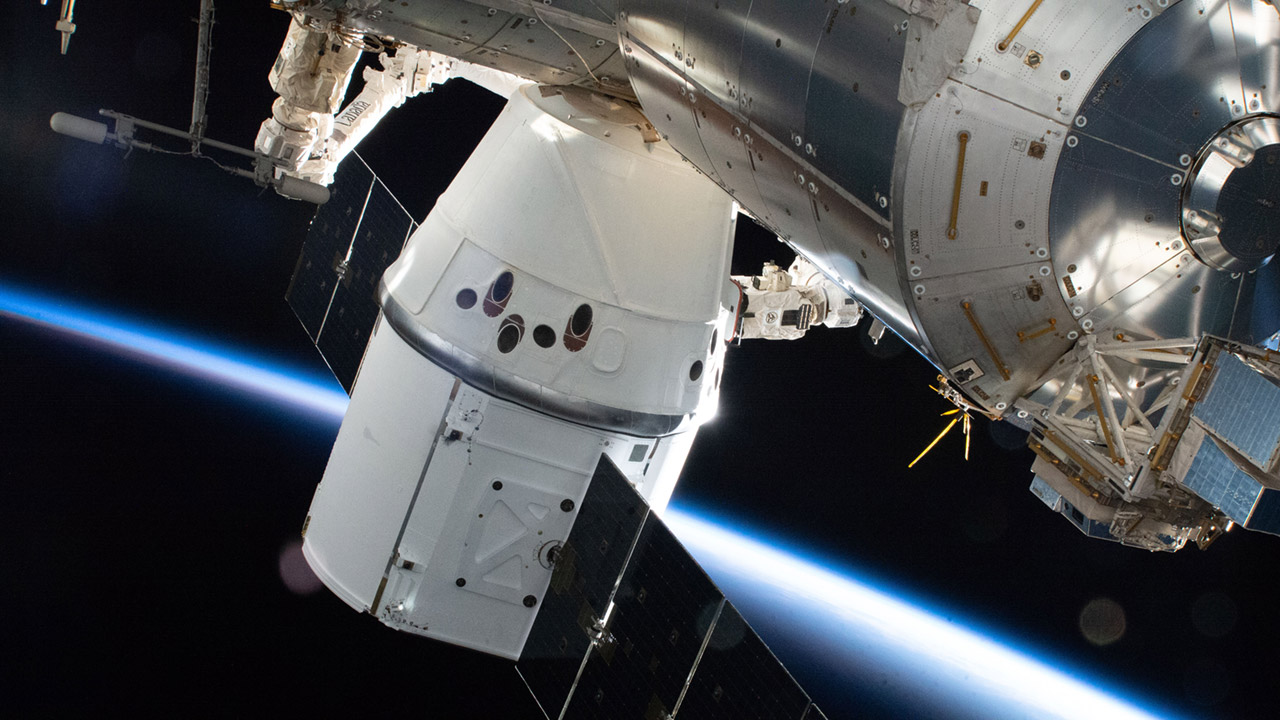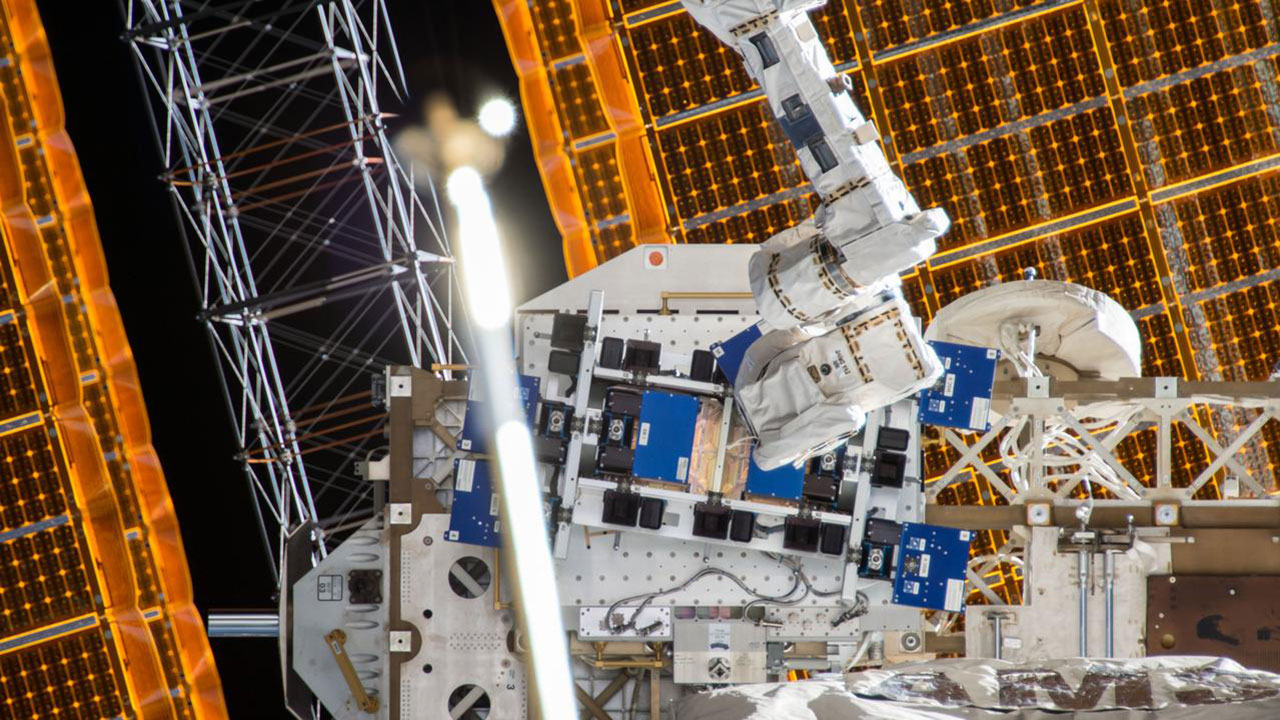KENNEDY SPACE CENTER (FL), April 7, 2020 – SpaceX’s Dragon spacecraft successfully splashed down today off the coast of California, bringing back dozens of research investigations sponsored by the International Space Station (ISS) U.S. National Laboratory. The successful splashdown and science return marks the completion of SpaceX’s 20th commercial resupply services (CRS) mission to the space station (contracted by NASA) to send critical research and supplies to the orbiting laboratory. The Dragon spacecraft spent approximately 30 days berthed to the space station before returning to Earth.
When Dragon returned, it brought back a variety of investigations in the life and physical sciences. Included are biological samples returning from a rodent research investigation sponsored by Baylor College of Medicine that launched to the space station on Northrop Grumman CRS-12 in 2019. This experiment is aimed at exploring the effects of microgravity on circadian rhythm and how disruptions to this internal clock affect metabolism. By using an animal model in space, where circadian rhythm is disrupted, this investigation will contribute to our understanding of human metabolic disorders such as liver disease, diabetes, and illnesses associated with obesity.
Also returning on this mission is America’s first bioprinter on the ISS—the BioFabrication Facility from Techshot—that launched on SpaceX CRS-18 in 2019. In addition to updating the bioprinter, the Techshot team will also evaluate the physical properties of a knee meniscus printed in microgravity.
The National Center for Advancing Translational Sciences, part of the National Institutes of Health, has sponsored a series of tissue chip investigations over the past two years in collaboration with the ISS National Lab. The Tissue Chips in Space initiative is a multiyear, multiflight program that aims to advance understanding of human diseases, with the goal of translating findings into potential new treatments to improve health on Earth. SpaceX CRS-20 will return two more Tissue Chips in Space investigations for analysis back on the ground. One investigation, from Boston-based biomedical company Emulate, is examining the immune response to disease-causing bacteria in an innervated intestine chip. Results will provide new insight into microgravity’s effects on immune response and how the human immune system may be fortified during times of stress. The other investigation, from the University of Washington and Johns Hopkins University, is examining microgravity’s effects on the structure and function of heart tissue chips to help improve understanding of heart disease back on Earth.
Another investigation using heart muscle cells will also return on this mission. Emory University led a study on the growth and maturation of cardiomyocytes (specialized heart muscle cells) in microgravity for use in regenerative medicine, disease modeling, and drug discovery. Also returning is an investigation from Rhodium Scientific studying the effects of radiation and microgravity on the co-evolution of a phage (a virus that infects bacteria) and its host bacteria, toward the development of novel antibacterial therapies.
This is a small snapshot of investigations returning on SpaceX CRS-20. To learn more about this mission, including all research investigations that launched on SpaceX CRS-20, please visit our launch page.
Media Contact:
ISS National Laboratory
Patrick O’Neill
904-806-0035
[email protected]
# # #
About the International Space Station (ISS) U.S. National Laboratory: In 2005, Congress designated the U.S. portion of the ISS as the nation’s newest national laboratory to optimize its use for improving quality of life on Earth, promoting collaboration among diverse users, and advancing science, technology, engineering, and mathematics (STEM) education. This unique laboratory environment is available for use by non-NASA U.S. government agencies, academic institutions, and the private sector. The ISS National Lab manages access to the permanent microgravity research environment, a powerful vantage point in low Earth orbit, and the extreme and varied conditions of space.
# # #







